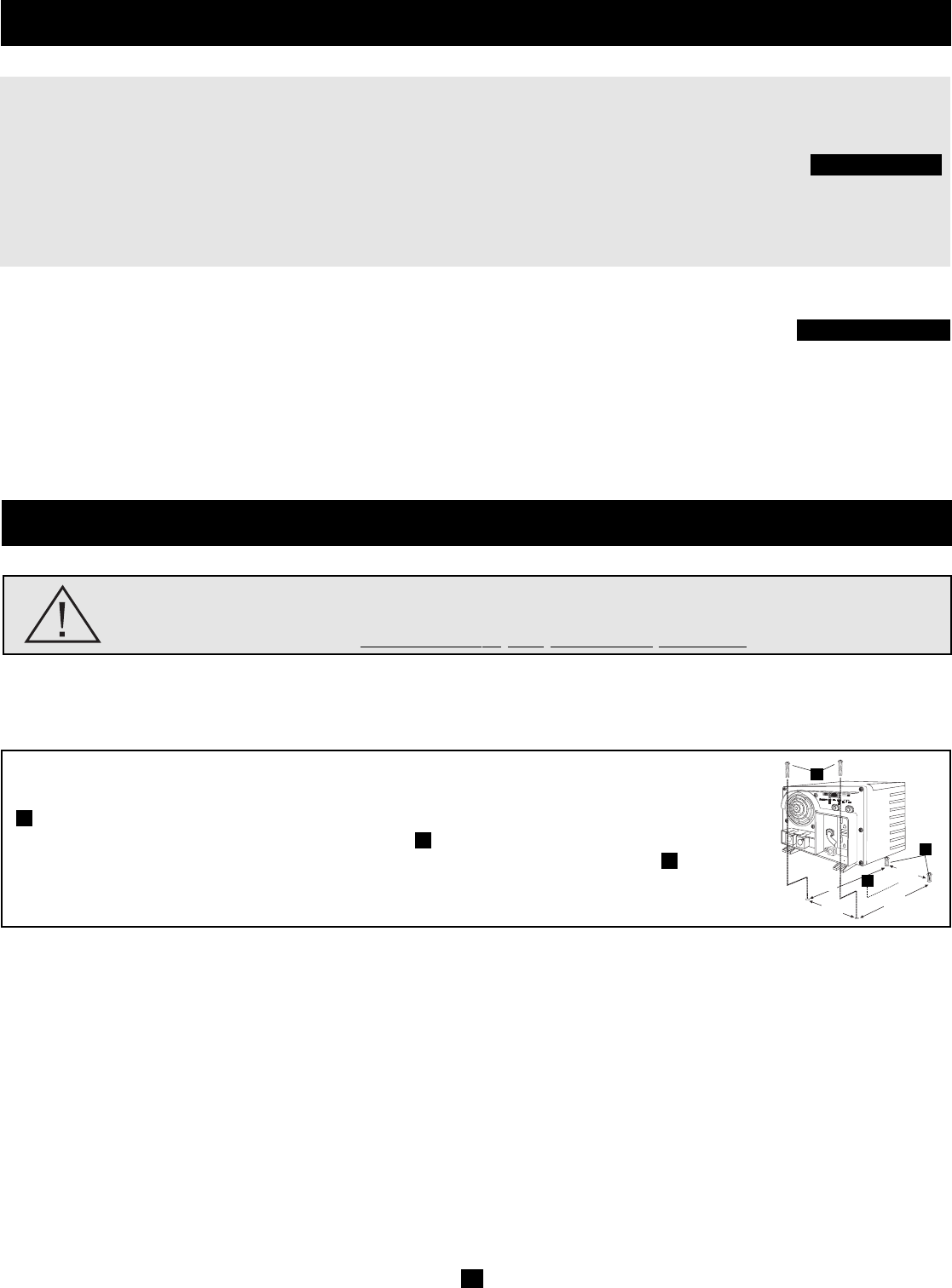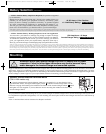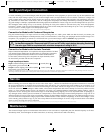
8
Mounting
WARNING! Mount your Inverter/Charger BEFORE DC battery and AC power
connection. Failure to follow these instructions may lead to personal injury
and/or damage to the Inver
ter/Charger and connected systems.
Tripp Lite manufactures a variety of different Inverter/Chargers with a variety of different mounting options for use in vehicular or non-vehicular
applications. Tripp Lite recommends permanent mounting of your Inverter/Charger in any of the configurations illustrated below. User must
supply mounting hardware and is responsible for determining if the hardware and mounting surface are suitable to support the weight of the
Inverter/Charger. Contact Tripp Lite if you require further assistance in mounting your Inverter/Charger.
Vehicular and Non-Vehicular Horizontal Mount
(750 & 1250 models only)
Using the measurements from the diagram, install two user-supplied ¼" (6 mm) fasteners into a
rigid horizontal surface, leaving the heads slightly raised. Slide the Inverter/Charger back over the
fasteners to engage the mounting slots molded on the bottom of the Inverter/Charger cabinet. Install
and tighten two user-supplied ¼" (6 mm) fasteners into the mounting feet molded on the front of the
Inverter/Charger cabinet.
C
B
A
The polycarbonate cabinet and mounting feet of your Inverter/Charger are durable enough to allow for wall mounting as well (if your vehi-
cle compartment requires this configuration). For wall mounting, the control panel of the Inverter/Charger must face to the side and not up
or down.
Allow 2" minimum front and rear clearance for adequate ventilation.
Battery Selection
(continued)
45 DC Amps × 5 Hrs. Runtime
× 1.2 Inefficiency Rating = 270 Amp-Hours
270 Amp-Hours ÷ 55 Amps
Inverter/Charger Rating = 5 Hours Recharge
• STEP 3: Estimate Battery Amp-Hours Required (for operation unsupported
by the alternator)
Multiply the DC amps required (from step 2, above) by the number of hours you
estimate you will operate your equipment exclusively from battery power
before you have to recharge your batteries with utility- or generator-supplied
AC power. Compensate for inefficiency by multiplying this number by 1.2.
This will give you a rough estimate of how many amp-hours of battery power
(from one or several batteries) you should connect to your Inverter/Charger.
NOTE! Battery amp-hour ratings are usually given for a 20-hour discharge rate. Actual amp-hour capacities are less when batteries are discharged at faster rates. For example, batteries discharged
in 55 minutes provide only 50% of their listed amp-hour ratings, while batteries discharged in 9 minutes provide as little as 30% of their amp-hour ratings.
• STEP 4: Estimate Battery Recharge Required, Given Your Application
You must allow your batteries to recharge long enough to replace the charge
lost during inverter operation or else you will eventually run down your batteries.
To estimate the minimum amount of time you need to recharge your batteries
given your application, divide your required battery amp-hours (from step 3,
above) by your Inverter/Charger’s rated charging amps (see Specifications section).
NOTE! For Tripp Lite Inverter/Chargers providing 1000 watts or less of continuous AC power, a full-size battery will normally allow sufficient power for many applications before recharging is
necessary. For mobile applications, if a single battery is continuously fed by an alternator at high idle or faster, then recharging from utility or generator power may not be necessary. For Tripp Lite
Inverter/Chargers over 1000 watts used in mobile applications, Tripp Lite recommends you use at least two batteries, if possible fed by a heavy-duty alternator anytime the vehicle is running. Tripp Lite
Inverter/Chargers will provide adequate power for ordinary usage within limited times without the assistance of utility or generator power. However, when operating extremely heavy electrical
loads at their peak in the absence of utility power, you may wish to “assist your batteries” by running an auxiliary generator or vehicle engine, and doing so at faster than normal idling.
6.75 in.
(17.1 cm)
7.87 in.
(20 cm)
6.75 in.
(17.1 cm)
4.5 in.
(11.4 cm)
▼
A
B
C
200712159 93-2768 RV Series Inverter-Charger Owner’s Manual_Eng.qxd 2/29/2008 1:55 PM Page 8














